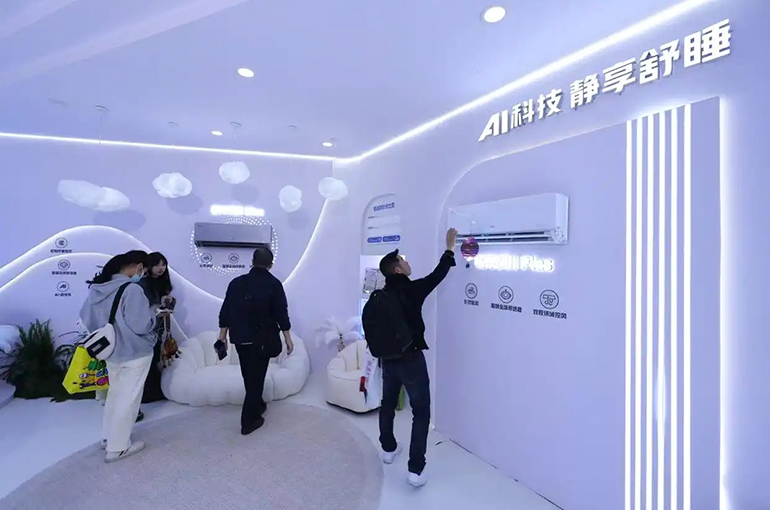 China’s Home Aircon Exports Keep Climbing; US Tariffs Are Not a Major Threat, Industry Insiders Say
China’s Home Aircon Exports Keep Climbing; US Tariffs Are Not a Major Threat, Industry Insiders Say(Yicai) April 17 -- China’s exports of household air conditioners got off to a strong start this year, thanks to better-quality products and aggressive market expansion. Exports to the US now only account for less than 8 percent of the total, and as a result, the US’ Reciprocal Tariffs are expected to only have a limited impact on the industry, insiders told Yicai.
China’s aircon exports surged 19.6 percent in the first two months from a year earlier to 18.8 million units, according to the latest data on ChinaIOL.com, an information service provider for the home appliance sector. And the export value jumped 23.2 percent to USD3.4 billion. Exports to Europe soared 51.3 percent, making it the fastest-growing region, while those to the US plunged 18.8 percent.
The proportion of Chinese home aircons exported to the US dropped to 7.8 percent at the end of last year from 19.2 percent at the end of 2015, said Li Xuefei, an analyst at Industry Online. In terms of value, the share of US exports plunged to 6.1 percent from 13.5 percent over the period.
"Before 2018, China’s aircon exports to the US were booming,” Li said. “But after the US government slapped a 25 percent tariff on Chinese home aircons in 2018 and launched anti-dumping and anti-subsidy probes, those exports took a nosedive.”
“Although the US is importing fewer aircons directly from China, it is still heavily reliant on China’s supply chain,” said Zhou Nan, secretary general of the household appliances branch of the China Chamber of Commerce for Import and Export of Machinery and Electronic Products. This is because China produces 80 percent of the world’s household air conditioning units and 90 percent of the compressors they use.
The US can’t just cut China out, Zhou said. After the 125 percent tariffs are introduced, US air con retailers will probably use their existing inventory, but once that runs out, they will likely come back to Chinese suppliers.
Plenty of Potential
There is still a lot of room for growth in emerging markets such as Southeast Asia, Latin America and Africa in terms of the penetration rate of aircons, Li said. Even in parts of Europe, aircons are not widely used, so there is plenty of potential outside the US. And the latest smarter, greener and more comfortable aircon units will help Chinese brands retain their existing customers.
“Our small aircon company will focus on developing markets in the European Union, Southeast Asia, Latin America and the Middle East this year, and we expect our aircon business to jump 30 percent this year,” the person in charge told Yicai.
Higher tariffs will suppress demand in the US, and the policy outlook remains uncertain, a former executive at another aircon company said. Chinese companies need to re-evaluate their global production strategies and spread their capacity more widely.
Aircon manufacturers should adopt an “asset-light” approach, the exec said. This means that companies should assemble products locally in overseas markets to reduce costs and to be able to respond flexibly to changes in trade conditions.
Editors: Tang Shihua, Kim Taylor